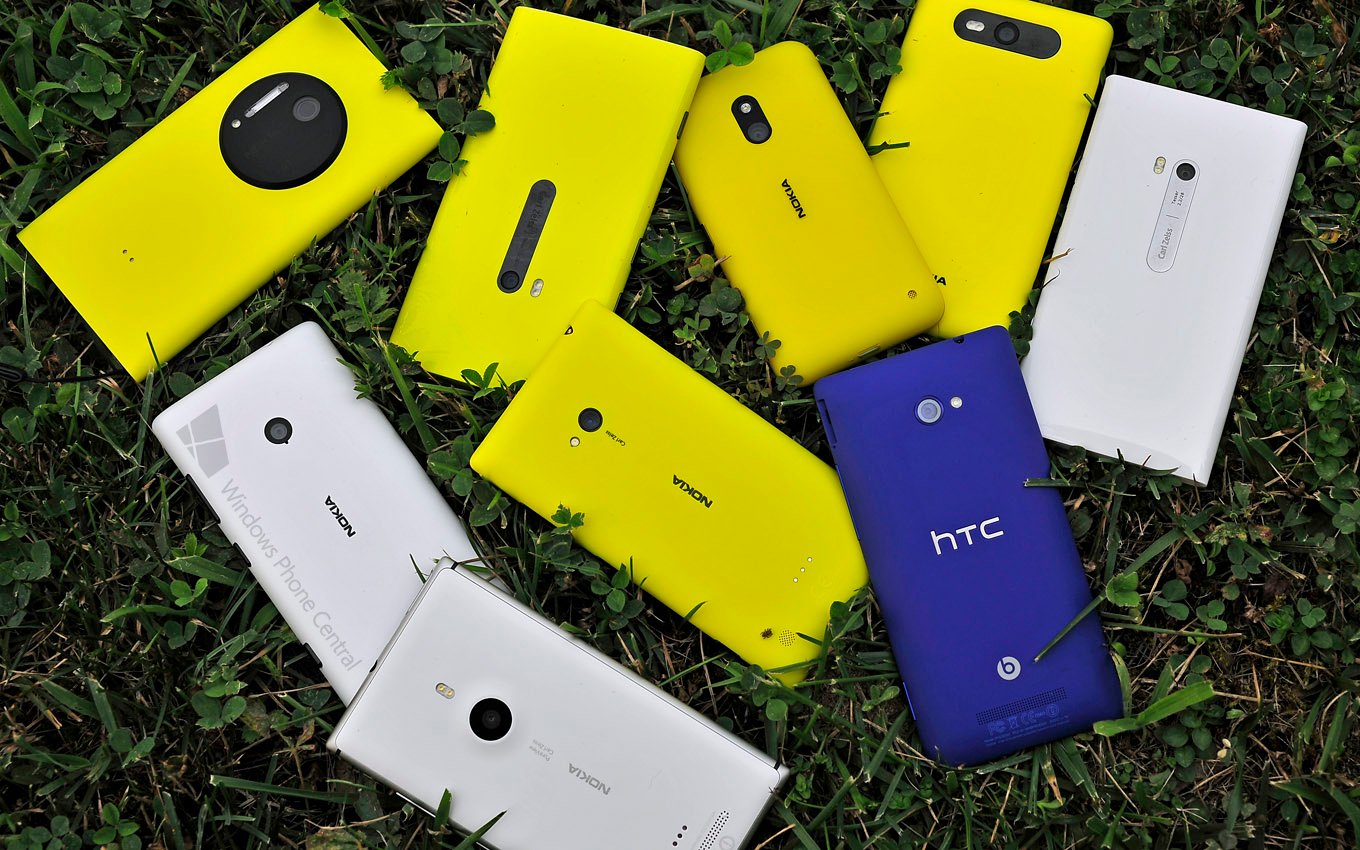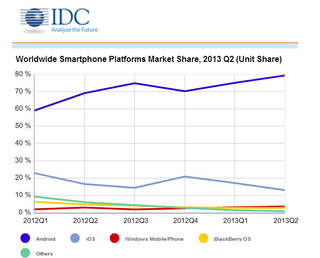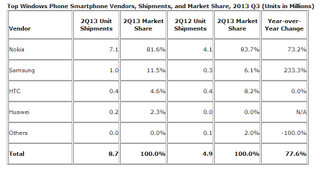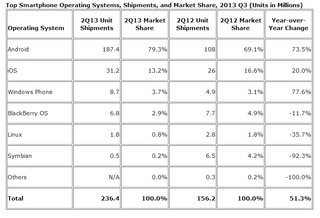Shipments of Windows Phone up 77% for the year; solidifies global third-ranking

Some good news today for Windows Phone as the latest numbers, based on device shipments from earlier this year, have revealed a steady increase for the third place operating system.
According to the IDC’s latest numbers, Windows Phone has seen a surge of 77% year over year for device shipments (8.7M in 2013 versus 4.9M for 2012). With those numbers, Windows Phone has increased from 3.1% market share to a modest 3.7%. While iOS and Android still dominate with 13.2% and 79.3% market share respectively, Windows Phone maintains the largest year over year increase.
This is the second report from the IDC this year that has shown strong YoY growth for Windows Phone and the second report from the IDC to claim its third place ranking, globally. However, while that 77% year over year change is impressive, it is down from the 150% year over year growth measuring back in February. Some of that though can probably be attributed to a downswing in general sales of technology as the global economy continues to stagnate.

IDC: Windows Phone is growing, but slowly
Meanwhile, BlackBerry has still not managed to stop the bleeding by losing another 2% in market share, dropping from 4.9% last year to just 2.9% in 2013. With the release of BlackBerry 10 and three new devices, the Canadian company is still in the early days of a possible recovery, but clearly they are ceding ground to Windows Phone at this point.
Ryan Reith, Program Manager with IDC’s Mobility Tracker Programs notes that Nokia is the catalyst behind the growth, which should be of no surprise. Representing 81.6% of all Windows Phone shipments in 2013 (exactly matching the numbers of AdDuplex), the Finnish company has quickly and aggressively become the dominate player on the platform. Reith notes:
"Nokia has clearly been the driving force behind the Windows Phone platform and we expect that to continue. However, as more and more vendors enter the smartphone market using the Android platform, we expect Windows Phone to become a more attractive differentiator in this very competitive market segment."

The question for many in the industry would be are these numbers good enough? In some ways, no as it is evident that Windows Phone’s market share is still miles behind iOS and especially Android. On the other hand, there is a certain change in mindset here that has taken place: Windows Phone is officially the third most popular mobile operating system in the world, toppling BlackBerry. That’s a very different psychological perspective for an OS many were calling a dud two years ago.
Get the Windows Central Newsletter
All the latest news, reviews, and guides for Windows and Xbox diehards.
In addition, the strong year over year growth demonstrates that the momentum is with Windows Phone to continue that upward trend. Meanwhile, the iPhone has declined year over year, dropping from a 16.6% high in 2012 to a more sobering 13.2% in 2013. Still, the IDC notes with iOS7 and a new device on the horizon (and rumors of a low-cost variant too), Apple is poised to recapture some of that last market that its competitors have seized with more frequent releases.

The bad news is even at 3.7% market share worldwide, Windows Phone may still not be taken seriously by vendors and developers. Many have argued of an invisible barrier that needs to be crossed before Windows Phone can truly be seen as a competitor. Some have placed that number at 5%, others at 10%, both of them arbitrary.
Still, there may be some truth in it as Windows Phone right now is winning by attrition against BlackBerry and while this growth rate is good news, it will still have to do better in the coming months to make a reasonable impact. Perhaps once the full weight of the Lumia 520's market impact is measured, we'll see a larger increase.
Source: IDC

Daniel Rubino is the Editor-in-chief of Windows Central. He is also the head reviewer, podcast co-host, and analyst. He has been covering Microsoft since 2007 when this site was called WMExperts (and later Windows Phone Central). His interests include Windows, laptops, next-gen computing, and wearable tech. He has reviewed laptops for over 10 years and is particularly fond of 2-in-1 convertibles, Arm64 processors, new form factors, and thin-and-light PCs. Before all this tech stuff, he worked on a Ph.D. in linguistics, performed polysomnographs in NYC, and was a motion-picture operator for 17 years.